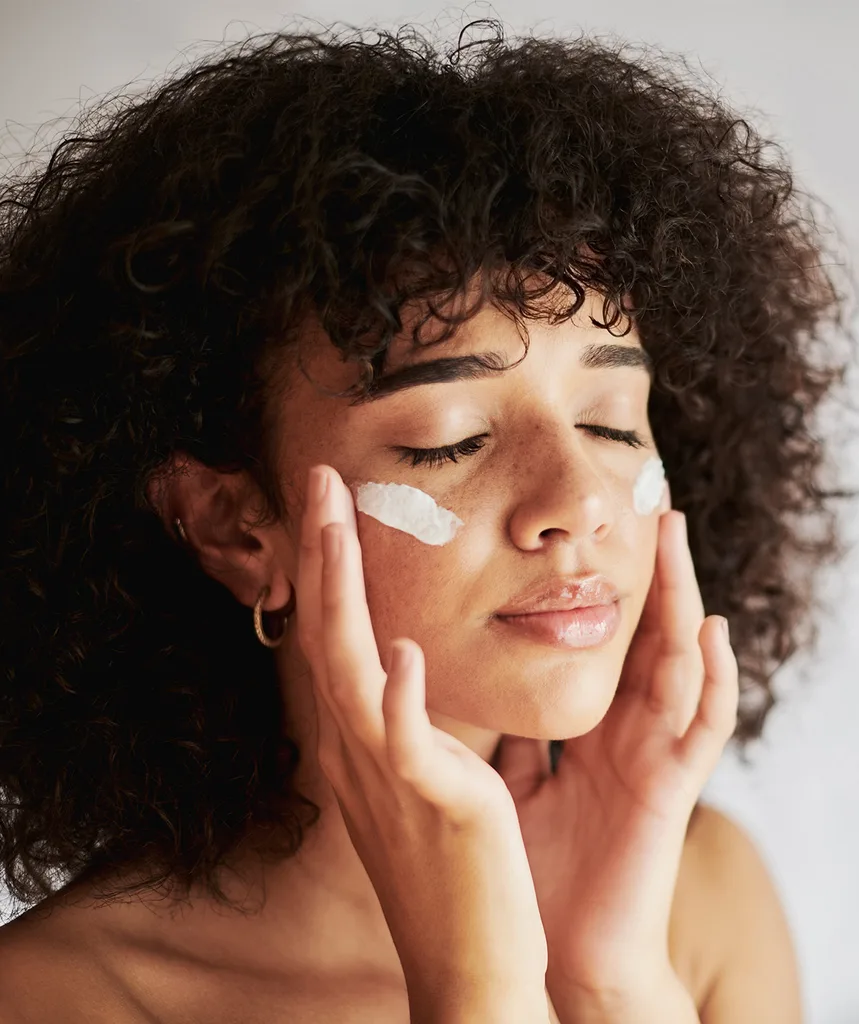Ask any dermatologist and they’ll confirm you might as well toss your expensive serums down the gurgler if you’re not wearing sunscreen: the sun will undo all their good work. So powerful are UV rays, they can do much worse than pesky brown spots and sultana skin. They can kill you.
Australia is the skin cancer capital of the world and, according to the Cancer Council, melanoma is now the third most common cause of cancer. The trouble with sunscreen is the confusion, even debate, around UV filters: are chemical sunscreens bad for your skin? Do they kill coral? Can mineral sunscreens offer enough protection? Should we be worried about nanoparticles?
“The facts are that there are no perfect UV filters,” says Dr Scott McGregor, We Are Feel Good Inc. co-founder and skin cancer and cosmetic physician. “Australia generally has very strict regulations for listing sunscreens. Any ingredient that has actual scientific evidence showing it is potentially harmful will be reviewed by the TGA and the TGA will warn consumers.”

Product recalls fuel the rising trepidation about chemical ingredients. In 2018, Hawaii banned sunscreen containing oxybenzone and octinoxate over concerns they damage coral reefs (this is still hotly debated among scientists). The FDA later found that both these chemicals can penetrate through skin and into the bloodstream (though did not say that this necessarily causes any harm); the Environmental Working Group (a US consumer watchdog) points to a 2020 study that found uncertain evidence that oxybenzone could cause tumours in rats.
None of these studies conclude that the chemical sunscreen ingredients in question are harmful to humans but for anyone interested in reducing chemical exposure, it seems a fair question.
“Currently the TGA are reviewing the safety of benzophenone,” says Emma Hobson, Dermalogica Director of Education Asia Pacific. Oxybenzone, by the way, is a derivative of benzophenone. “The ‘jury is out’ so to speak as there has not been a statement from them regarding eliminating its use due to safety issues.”
So why do we even use chemical UV filters like oxybenzone? Mostly because they sink in nicely and are invisible on skin, silently absorbing UV rays and releasing it as heat through the skin. As most people prefer a sunscreen they can’t see or feel, they are also more likely to wear it, which is what matters most.
WATCH: How to wear SPF under makeup (Article continues after video)
“The best sunscreen is the one that you will want to wear every day,” says Dr McGregor. Mineral sunscreens (with titanium dioxide and/or zinc oxide) are traditionally heavier and chalkier because they sit on the surface of the skin, but they are also less likely to cause reactions.
“Mineral sunscreen takes the cake on complexity,” says Frances van der Velden, whose quest for the perfect SPF inspired her to create her own, Airyday. “It is notoriously difficult to reach a high mineral SPF if you’re trying to keep skin ghosting down and it adds further complexity if you want a formula that glides beautifully and feels light on the skin.”
But it is possible and newer formulations are proof. If you have sensitive skin or rosacea, a mineral sunscreen should be your go-to. “With the exception of homosalate, all synthetic UV filters pose a risk of sensitising skin,” says Desiree Stordahl, Director of Applied Research & Education for skincare label Paula’s Choice.
“Some ingredients are simply known to be gentler on skin than others and in the realm of sun care, titanium dioxide or zinc oxide fall into that category.” You’ll find one or both in a mineral sunscreen. “With chemical sunscreen actives you might be looking at three, four, or even seven filters used in combination, so you could be sensitive to one or any of those,” says Desiree.

Whatever choice you make, avoiding UV rays is non-negotiable. “Sun-smart behaviour is critical for the health and long-term appearance of your skin,” says Desiree. “Without a doubt UV radiation generated by the sun is a serious global carcinogen.”
How much sunscreen should I put on?
“The average body should have at least 30ml applied every 2 to 4 hours,” says Dr McGregor. “These are the levels that the TGA testing is done on, so any less than this will mean inadequate coverage.”
Do mineral sunscreens reflect UV rays?
No. “Zinc oxide does not work by majestically reflecting rays. This is a myth,” says Dr McGregor. “It works exactly the same as chemical UV filters, by absorbing UV rays and converting these to heat energy.”
Is broad spectrum important?
Yes! SPF measures UVB only, but broad spectrum means it protects against both UVA (the ageing rays) and UVB (the burning rays). “UVA rays penetrate further into skin than UVB rays, steadily destroying key substances that give skin its youthful, healthy appearance,” says Desiree Stordahl. “UVA rays are a major contributor to every type of skin cancer.”
WATCH: Sunscreen tips to keep you protected every day (Article continues after video)
We thought that while you may know to apply sunscreen, we have a few tips that are going to help keep you properly protected on a daily basis.
Brought to you by Natural Instinct
Are nanoparticles toxic?
No. “There are no definitive studies to suggest that nanoparticles are harmful or are absorbed in high enough levels to cause issues,” says Dr McGregor. “Most good zinc oxide sunscreens will now use microparticles. These are not quite so tiny, so won’t get absorbed through the skin, but still have the same positive aspects in that they absorb UV rays and give minimal white cast.”
Can babies wear sunscreen?
Yes, so long as they are over six months old. “Choose a physical sunscreen that is free of artificial fragrance, parabens and colour,” says Emma Hobson.
Is the SPF in make-up enough?
Not really… “You would have to really cake it on to ensure adequate coverage,” says Desiree. “But powder SPF is one of the easiest ways to reapply.”
.png?resize=720%2C405)


